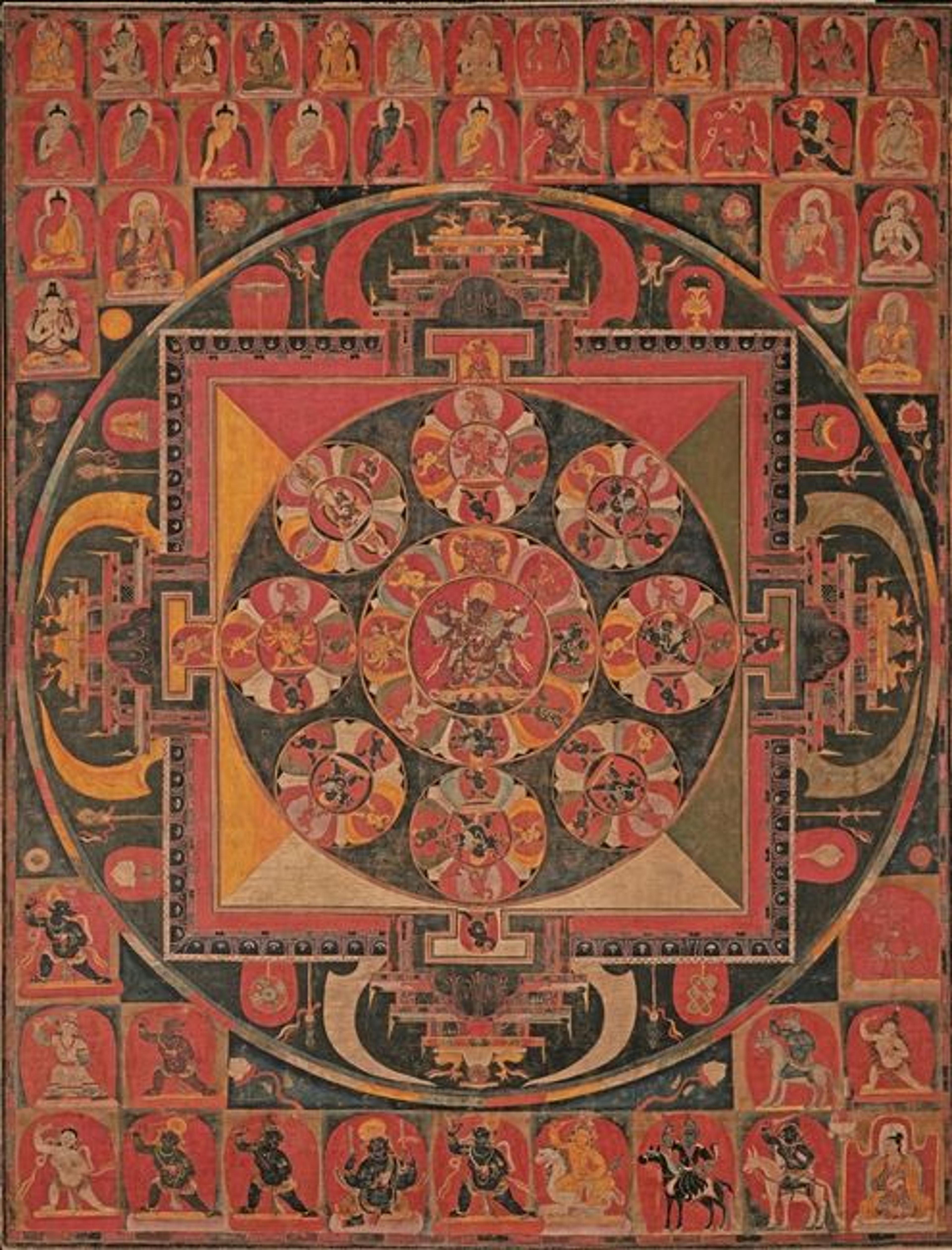
Exhibition Dates: September 19, 2024–January 12, 2025
Location: The Met Fifth Avenue, Robert Lehman Wing, Galleries 963-65
(New York, August 28, 2024)—This fall, The Metropolitan Museum of Art will present Mandalas: Mapping the Buddhist Art of Tibet, an exploration of the diverse imagery of Himalayan Buddhist devotional art. Opening September 19, the exhibition will include more than 100 paintings, sculptures, textiles, costumes, weapons, instruments, and an array of ritual objects dating mainly from the 11th to the 15th century. The early masterworks in the presentation will be juxtaposed with a contemporary installation by Tibetan artist Tenzing Rigdol that has been commissioned by The Met specifically for this exhibition and will inhabit the atrium of the Museum’s Robert Lehman Wing. The exhibition is made possible by the Placido Arango Fund and Lilly Endowment Inc.
Additional support is provided by the Florence and Herbert Irving Fund for Asian Art Exhibitions and the E. Rhodes and Leona B. Carpenter Foundation.
“This exhibition takes visitors on an unprecedented exploration of sublime historical Himalayan Buddhist devotional art, deepening understandings and appreciation of how and why these works were made,” said Max Hollein, The Met’s Marina Kellen French Director and Chief Executive Officer. “And at the center of the galleries, Tenzing Rigdol's powerfully immersive and compellingly relevant mandalic installation draws on the foundation of the rich historical material to create a space for inspired contemplation.”
Mandalas: Mapping the Buddhist Art of Tibet will illuminate the thematic components of Tibetan mandalas—intricately designed diagrams developed to support Vajrayana Buddhist practice—and introduce how specific iconography helped individuals on the path to enlightenment. Each gallery addresses a significant aspect of Tibetan artistic production: teachers who interpreted esoteric texts and established monastic lineages; bodhisattvas who help the devout on their spiritual path; protectors that rid the world of evil and protect the Buddhist teachings; and tantric deities as evocations of enlightenment. The final gallery will contain a seminal group of mandalas, complex diagrams that integrate deities and iconography seen in the other galleries. As conceived within Tibetan Buddhism, ultimately it is the mandala and the associated tantric ritual that has the potential to offer access to true reality.
At the center of the exhibition, Tenzing Rigdol's contemporary mandala will depict some of the concerns of today’s world, addressing issues related to climate change and the social responsibilities of the individual.
“I’m trying to explore the quintessential tantric idea of universality and oneness and how intricately interconnected we all are,” said contemporary Tibetan artist Tenzing Rigdol. “It is said that when the Buddha reached enlightenment, he looked at a leaf and on that leaf he saw stars, he saw rain, he saw soil, he saw air, and, in essence, he saw interdependency."
Mandalas: Mapping the Buddhist Art of Tibet will feature exceptional works from The Met’s permanent collection as well as important loans from private and public collections, including the Asia Society Museum, The Rubin Museum of Art, The Newark Museum of Art, and Harvard Art Museums. The noteworthy selection of featured works includes the loan of two extremely early mandalas from Tibet alongside Met collection examples from Nepal and China. The exhibition will also include loans of exquisite illustrated palm-leaf Prajnaparamita and Gandavyuha manuscripts alongside important monastic portraits from the 12th to the 14th century, including those of Atisha and Shakyashribhadra, two Indian monks who helped bring Buddhist teachings to Tibet, and the loan of a pair of gem-like portraits of the founders of the Taklung monastery. The exhibition will also feature musical instruments and dance costumes used in public Buddhist festivals and a range of weapons and armor housed in monastic protective shrines that would have been offered to fierce deities.
“The study of the Himalayas, especially Tibet, has advanced tremendously over the last 30 years,” said Kurt Behrendt, Associate Curator of South Asian Art at The Met. “While many Himalayan books and exhibitions have focused on technical aspects of the Tibetan Buddhist tradition's complexity, few have succeeded in demystifying these sublime artworks to make the key ideas broadly accessible. This show aims to explore how images were employed in the Himalayan context to present the great Tibetan tradition meaningfully and coherently. The juxtaposition of a contemporary mandala as an installation should resonate with today's viewers in a way that helps to make the larger ideas in the show relevant.”
Credits and Related Content
Mandalas: Mapping the Buddhist Art of Tibet is curated by Kurt Behrendt, Associate Curator of South Asian Art at The Met.
The exhibition will be accompanied by a fully illustrated catalogue as well as a variety of educational opportunities, including in-gallery conversations, panels, demonstrations, and hands-on activities inspired by these unparalleled diagrams of the universe. Programming and activities are available for all ages.
The catalogue is made possible by the Florence and Herbert Irving Fund for Asian Art Publications.
The exhibition is featured on The Met website, as well as on social media.
###
August 28, 2024
Contact: Matthew Tom, Ann Bailis
Communications@metmuseum.org
Image: Chemchok Heruka Mandala, Tibet, second half 12th century, mineral pigments on cotton, 38 × 32 in. (96.5 × 81.3 cm), Michael J. and Beata McCormick Collection